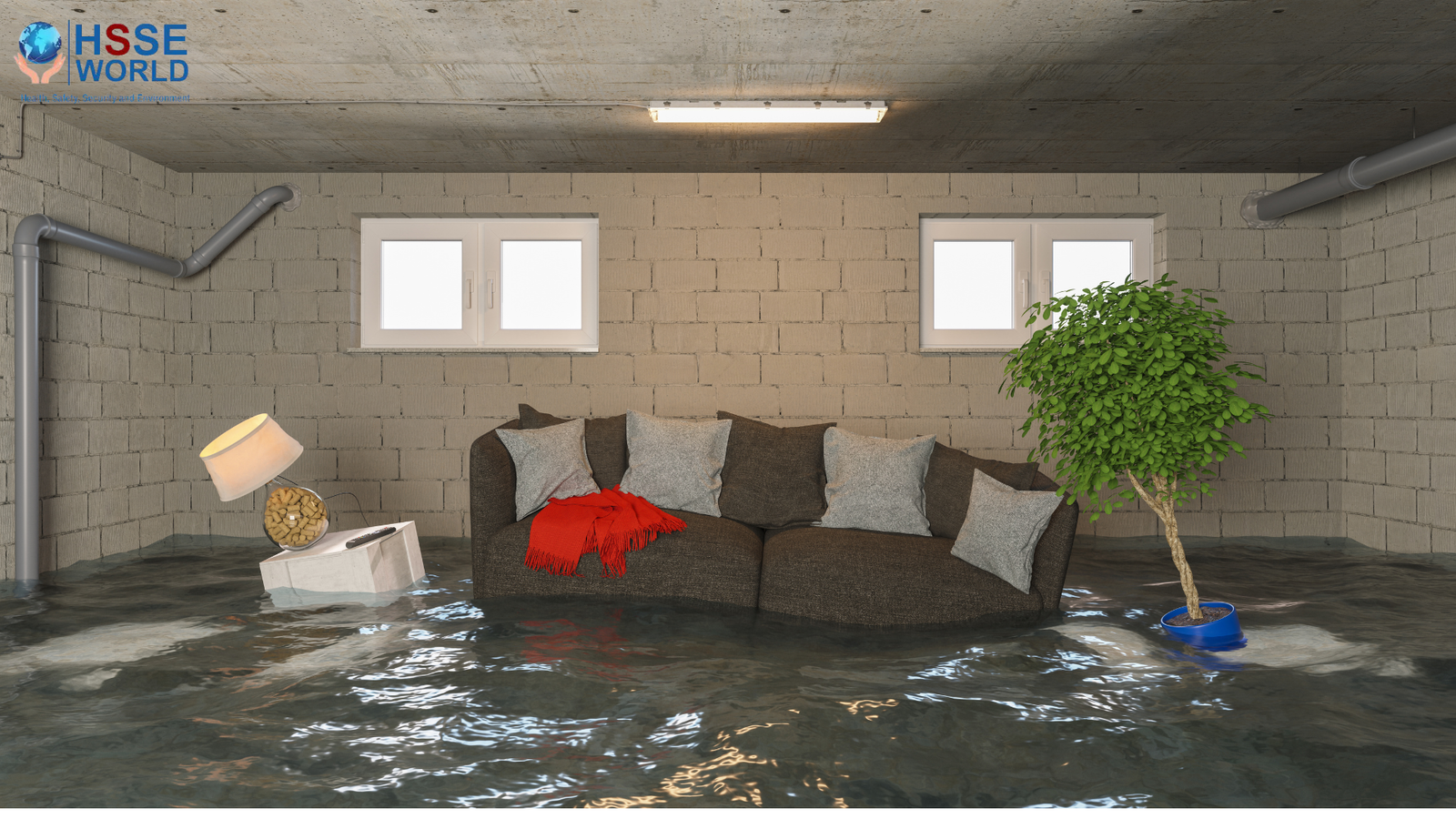In suburban areas of New York, a flooded basement is pretty standard, especially after heavy rain or property getting affected by natural calamities. This can lead to significant damage to the property and hurt the health and safety of the family. So, here’s a step-by-step guide to assist you through the basement flood and what you should do eventually:

Introduction: Understanding the Importance of Safety in a Basement Flood
Basement floods can occur due to heavy rain, plumbing failures, or natural disasters. Prioritizing safety is critical. Floodwater can contain contaminants like sewage, chemicals, and debris. Health risks from exposure include infections and respiratory issues. Electrical hazards are another primary concern. Standing water may hide live electrical outlets or appliances, posing electrocution risks.
- Identify Hazards: Recognize potential dangers like sharp objects, mold, and pollutants.
- Protective Gear: Use waterproof boots, gloves, and respiratory masks.
- Electricity: Turn off power at the breaker box if it’s safe to do so.
- Professional Help: Consult experts for hazardous situations.
Always prioritize safety first.
What causes a basement flood?
There can be plenty of reasons and here are a few common ones that can lead to the flood:
- If there are cracks in the wall of the basement, then it would allow the groundwater to seep in through multiple areas.
- If the wall is bowing, then it can burst, and a high volume of water will flood the area.
- Damaged pipes can eventually burst, which sprays water through the
Ensure that everyone is safe
You must ensure that every person in the house is safe and assess the damage. Never venture around flooded areas; if the water in the basement reaches the electrical outlets, there are chances of electrical shock. You must also get the animals to a safe location and never take unnecessary risks. Get an assessment done by a professional who will support you while filing the flooded basement insurance claim.
Immediate Steps to Take When You Discover a Basement Flood
- Turn Off Electricity: Immediately switch off electrical power to the basement from the main circuit breaker. Avoid entering a wet basement until electricity is off.
- Assess Safety: Check for structural issues. If there’s significant damage or you suspect contamination, contact professionals.
- Wear Protective Gear: Use rubber boots, gloves, and a mask to protect yourself from contaminated water and debris.
- Stop Water Source: Identify and stop the water source if it’s safe to do so. This may involve turning off the main water supply or fixing a broken pipe.
- Remove Standing Water: Use pumps, wet vacuums, or buckets to remove water quickly to prevent further damage.
Read: photo-of-the-day-flood-safety-tips
Ensuring Personal Safety: What to Avoid and Wear
When entering a flooded basement, it’s important to wear the right protective gear. Avoid direct contact with floodwater. Floodwater can be contaminated with harmful bacteria, chemicals, or electrical hazards. Wear rubber boots to avoid slipping and getting your feet wet. Non-slip gloves are essential for handling objects. A full-body waterproof suit is recommended.
Use safety goggles to protect your eyes from splashes or debris. A respiratory mask is vital to avoid inhaling mold spores or other hazardous particles in the air. Avoid wearing loose or absorbent clothing.
Turning Off Utilities: How to Safely Cut Power and Gas
- Locate Utility Shutoffs: Identify the locations of the main power and gas shutoffs. Typically, the power shutoff is near the breaker panel, and the gas shutoff is near the gas meter.
- Wear Protective Gear: Before approaching flooded areas, wear rubber boots and gloves to avoid electric shocks and ensure safety.
- Turn Off Power:
- If the breaker panel is accessible without stepping into water, turn off the main breaker.
- If the panel is submerged, do not attempt to turn off the power. Contact the utility company immediately.
- Shut Off Gas: Use a wrench to turn the gas valve a quarter turn until it is perpendicular to the pipe. If you smell gas, evacuate immediately and call emergency services.
- Confirm Utility Shutdown: Verify that both the electricity and gas are off before entering the basement.
Safety Tip: Always prioritize safety and do not make any assumptions about utility statuses based on visual inspections.
Assessing the Source and Severity of the Water Intrusion
Determining the source of water intrusion is crucial for an effective cleanup. Immediate steps include:
- Identify the Water Source:
- Check for visible leaks from pipes, fixtures, or appliances.
- Examine walls and floors for seepage signs.
- Verify if the flooding is due to external factors like heavy rainfall or melting snow.
- Evaluate the Water Type:
- Clean Water: From rain or broken pipes, posing minimal health risks.
- Grey Water: From appliances like washing machines, may contain contaminants.
- Black Water: From sewage or flooding, highly hazardous and requires professional handling.
- Assess Extent of Damage:
- Measure water depth using tools.
- Document affected areas and items.
Calling Professionals: When to Seek Help and What to Expect
Knowing when to involve professionals is crucial. Seek their assistance in the following scenarios:
- Severe Water Damage: If the water level exceeds a few inches or if structural damage is evident.
- Electrical Concerns: Flood water in contact with electrical outlets or wiring poses severe risks.
- Contamination Issues: Black water, including sewage, requires specialized handling.
Professionals will assess the damage, use industrial-grade equipment for water extraction, and ensure thorough drying. They can also provide mold remediation services and conduct structural repairs if needed. Expect a comprehensive report outlining damages and required repairs.
Initiating the Cleanup Process: Essential Tools and Equipment
The proper tools and equipment play a vital role in effectively handling a basement flood. Before beginning, ensure the following essentials are on hand:
- Wet/Dry Vacuum: Crucial for water extraction.
- Dehumidifier: Helps reduce moisture and prevent mold growth.
- Submersible Pump: Ideal for removing large volumes of water.
- Heavy-Duty Fans: Accelerate the drying process.
- Buckets and Mops: Basic yet necessary for manual water removal.
- Protective Gear: Includes gloves, boots, masks, and goggles.
- Extension Cords: Provide power to necessary equipment, ensuring they remain clear of water.
- Plastic Sheeting: Useful for covering items and minimizing additional damage.
Removing Water: Effective Techniques for Pumping and Drying
Professionals should assess the basement’s water level first. For shallow floods, wet vacuums can be employed.
- Pump Selection:
- Submersible Pumps: Efficient for deep water.
- Utility Pumps: Suitable for less extensive flooding.
- Water Extraction:
- Place the pump at the lowest point.
- Ensure discharge hose directs water away.
- Drying Process:
- Utilize dehumidifiers to reduce moisture.
- Employ high-volume fans for air circulation.
- Additional Measures:
- Clean and disinfect affected areas.
- Monitor humidity levels continuously.
Block off electrical sources to prevent hazards.
Salvaging Belongings: Tips for Cleaning, Drying, and Assessing Damage
Cleanup the basement
When you are sure everyone around you is safe, call the professionals who can help assess the damage. You also need to clean up the mess and ensure that the process conducted by the professionals is effective. Using a sump pump or a wet-dry vacuum, you must remove the standing water. If there are no appliances around you, you can also use a regular mop to clean the areas. Next, you have to dry out the affected area using a dehumidifier. However, taking all the precautions would help, as these flood waters might contain hazardous materials such as raw sewage and chemicals. Always use protective gear and ensure disinfecting the area is done very well.

- Remove Items Immediately: Quickly move salvageable items to a dry location to prevent further water damage.
- Sort Items by Material: Separate porous (fabrics, books) from non-porous items (metal, plastic) as porous materials can hold water longer, leading to mold.
- Clean Items Thoroughly: Wash non-porous items with warm, soapy water and disinfect them. Use specialized cleaners for fabric and upholstery.
- Dry Belongings Properly: Air-dry items in a well-ventilated area. Use fans, dehumidifiers, or drying racks for faster results.
- Assess the Damage: Inspect each item for signs of irreversible damage. Discard items that are beyond repair to avoid health risks.
Asses the items
After draining the basement, assess all the items that might have survived the flood. This will help you decide how much you need to spend on repair and also get an estimate of the water damage. Save as many items as possible, prepare the space to be well-ventilated, and allow it to dry. To prevent mold growth, throw away the wet drywall and insulation. You must also remove the carpeting to prevent the floor from dampening.
Disinfecting and Preventing Mold Growth: Key Products and Methods
Disinfecting and preventing mold growth after a basement flood is crucial. Various products and methods can efficiently address these issues:
- Bleach Solution: Effective against bacteria and mold spores. Use a mixture of one cup of bleach per gallon of water.
- Antimicrobial Sprays: Commercially available sprays designed specifically for mold and mildew prevention.
- Hydrogen Peroxide: A natural and safe alternative for disinfecting surfaces. Use a 3% solution directly on affected areas.
Key Methods
- Dry the Area Thoroughly: Utilize dehumidifiers, fans, and open windows to reduce moisture.
- Remove Porous Materials: Items like carpets, drywall, and insulation should be discarded if soaked.
- Regular Monitoring: Inspect for mold regrowth periodically and address any dampness immediately.
Dealing with Insurance: How to Document Damage and File Claims
Succeeding in insurance claims requires accurate documentation and timely actions:
- Photograph Everything:
- Take clear, dated photographs of all affected areas and damaged items.
- Record Details:
- Make a detailed list of damaged belongings, including purchase dates and costs where possible.
- Save Receipts:
- Keep receipts for any repairs or services related to the flood.
- Contact Insurer:
- Notify the insurance company promptly. Provide them with all requested forms and documents.
- Professional Estimates:
- Obtain estimates from licensed contractors for repairs to include in the claim.
- Follow Up:
- Communicate regularly with the insurer and keep copies of all correspondence.
Finally, file an insurance claim
Suppose you find that the flooding has damaged the property significantly. In that case, you have to seek help from a professional restoration company, which would require a hefty sum of money. The professionals will assess the extent of the damage and provide you with a timetable for the necessary repair. You might have to book an electrician to ensure that the home’s electrical system is functional and safe. Also, a plumber must fix the plumbing system and detect the issues that might have caused the flood to prevent such incidents shortly. Finally, you must consult with Zicklin Contracting, contact the insurance company, go through the damage policy cover, and file a claim.



